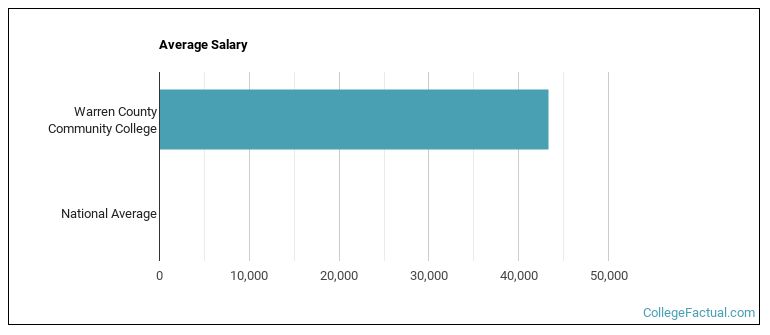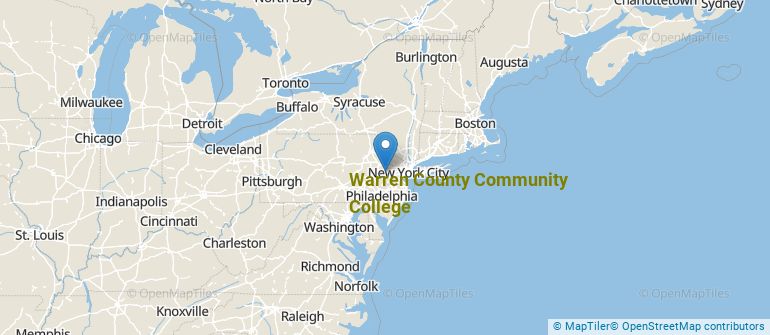 by our College Data Analytics Team
by our College Data Analytics TeamExplore the best ranked schools for the programs you are most interested in.
Warren County Community College was not ranked in College Factual's 2025 Best Overall Colleges report. This could be for a number of reasons, including lack of data.
See all of the rankings for Warren County Community College.
If you are worried about getting into Warren County Community College, don't be. The school has a liberal open admissions policy, which means you only need to meet basic requirements in order to be admitted. Still, be sure to submit a complete application and provide any other requested materials.
With a student to faculty ratio of 18 to 1, Warren County Community College is about average in this regard as the nationwide rate is 15 to 1. While this does not translate directly to class size, it's a good indicator of how much time professors will have to spend with their students on a one-on-one basis.
When estimating how much access students will have to their teachers, some people like to look at what percentage of faculty members are full time. This is because part-time teachers may not have as much time to spend on campus as their full-time counterparts.
The full-time faculty percentage at Warren County Community College is 100%. This is higher than the national average of 47%.
The freshmen retention rate tells us what percentage of first-year, full-time students choose to continue on to their sophomore year at a particular school. The rate at Warren County Community College is 64%, which is about average when compared to the national rate of 68%.
During the 2017-2018 academic year, there were 3,251 undergraduates at Warren County Community College with 572 being full-time and 2,679 being part-time.
The net price is calculated by adding tuition, room, board and other costs and subtracting financial aid.Note that the net price is typically less than the published for a school. For more information on the sticker price of Warren County Community College, see our tuition and fees and room and board pages.
While almost two-thirds of students nationwide take out loans to pay for college, the percentage may be quite different for the school you plan on attending. At Warren County Community College, approximately 1% of students took out student loans averaging $6,000 a year. That adds up to $24,000 over four years for those students.
Get more details about paying for Warren County Community College.

See which majors at Warren County Community College make the most money.
Get more details about the location of Warren County Community College.

Contact details for Warren County Community College are given below.
| Contact Details | |
|---|---|
| Address: | 475 Route 57 W, Washington, NJ 07882-4343 |
| Phone: | 908-835-9222 |
| Website: | www.warren.edu/ |
| Most Popular Majors | Bachelor’s Degrees | Average Salary of Graduates |
|---|---|---|
| Liberal Arts General Studies | 76 | NA |
| Business Administration & Management | 38 | NA |
| Nursing | 20 | NA |
| Criminal Justice & Corrections | 14 | NA |
| General Physical Sciences | 9 | NA |
| General Biology | 6 | NA |
| Allied Health & Medical Assisting Services | 6 | NA |
| Air Transportation | 5 | NA |
| Instructional Media Design | 3 | NA |
| Mental & Social Health Services | 3 | NA |
Online courses area a great option for busy, working students as well as for those who have scheduling conflicts and want to study on their own time. As time goes by, expect to see more and more online learning options become available.
In 2022-2023, 609 students took at least one online class at Warren County Community College. This is an increase from the 563 students who took online classes the previous year.
| Year | Took at Least One Online Class | Took All Classes Online |
|---|---|---|
| 2022-2023 | 609 | 238 |
| 2021-2022 | 563 | 113 |
| 2020-2021 | 812 | 735 |
| 2018-2019 | 387 | 97 |
Learn more about online learning at Warren County Community College.
Footnotes
*The racial-ethnic minorities count is calculated by taking the total number of students and subtracting white students, international students, and students whose race/ethnicity was unknown. This number is then divided by the total number of students at the school to obtain the racial-ethnic minorities percentage.
References
More about our data sources and methodologies.